Several years ago, we were living in Eugene, Oregon and I was on the Board of the Willamette Farm and Food Coalition. Under the direction of Megan Kemple (A bonafide Local Food Genius!) we started the Farm to School project for the schools and farms of Lane County. It was early in the national farm to cafeteria movement and we were making it up as we went along, but with Megan’s organizing smarts our project was soon recognized nationally. We started getting the produce of local farms into school cafeterias, connecting school students with those farms and their intelligent farmers. The farms became classrooms, teaching children and youth where their food comes from. The classrooms and cafeterias became local marketplaces where farms and food businesses could negotiate contracts to sell their products and help build a vibrant farm and food processing economy. Because of her work, Megan quickly became a go-to resource for schools and farms across our state and nation. As Oregon put together it’s own Farm To School network to inspire and fund projects around the State, Megan eventually directed the state-wide program. Anyway, I am proud to call Megan Kemple my good friend and colleague in stewarding vibrant soil and mentoring food-system-savvy-humans!
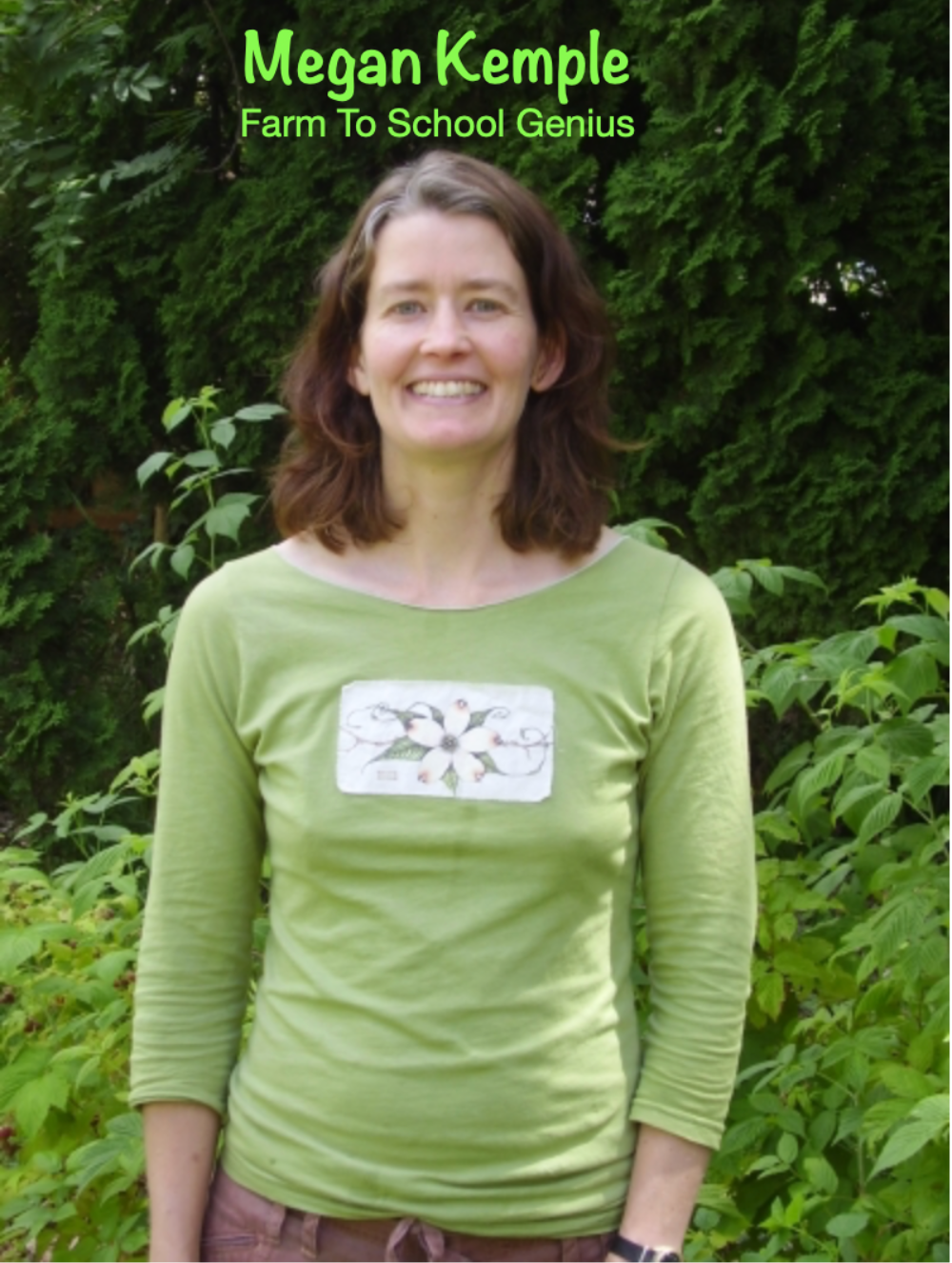
As Megan and her staff were developing curricula for 4th-5th-6th-grade classrooms, I told her we really needed a song! After all, I knew a not-half-bad songwriter with farm cred! We needed a theme-song-ditty classes could sing together to enhance their understandings of home grown recipes and farmers—a tune to help us celebrate the magic of compost and the feel of dirt in your hands. I was pretty sure I could compose something kids might like to sing, so I sat down with Megan and asked her all about the experiences the students were already having on the farms. She told me stories of the kids planting school gardens, learning from farmers, picking and sampling produce, reaching under laying hens to gather eggs, squirting real milk from the udder of a cow and the tears that go with chopping onions for stir-fry. She told me about classes bringing produce back to school—making soups, salads and ratatouille at their desks! I asked her to tell me what she was hearing the students say as they experienced a world surprisingly new to most of them. She gave me two words: “Oh Yum!” As I started creating lyrics, those words became the title! I share it with you now to celebrate the farm to school connections being made all around the world and the heroes like Megan and her team who make them happen. As I share this, I want to make sure you know that the voices you hear are those of students from one of the elementary schools. The photos were taken by Megan and other staff of the Farm and Food Coalition. We got permission more than 10 years ago to use the photos to make this production. So go ahead! Grab some kids and sing along!!
October just happens to be National Farm to School Month! Many of you will be totally oblivious of this factoid. And rightly so, given our pre-occupation with whether we will have school at all, what it will look like and who will be marching and shouting outside our school buildings in protest of the hard choices our Governors, School Boards and teachers are trying to make for the common good. But here is what the Farm To School site says:
Farm To School Month is a time to celebrate the connections happening all over the country between children and local food and farms. From taste tests in the cafeteria and nutrition education activities in the classrooms, to farm visits and school garden harvest parties, join the celebration!

I love this picture of Mom and Dad in their prime, leaning on the milk tank on our family farm. I don’t remember how many millions of gallons of the creamy stuff Mom figured she’d sucked out of those cows and sent to the creamery during her 40+ years organizing the milking parlor. Maybe more important was the flow of children and families they introduced to the farm over the years, who came away with a deeper sense of where food does come from and why it’s so important for more of us to know that. And it was easier then, right? There were over 100 dairies in our county then. Maybe 2 now. More people knew more of the farmers.
They knew where they got their milk and cheese. The butter was made at a plant in our own town. There was a big cannery a few blocks from where I went to elementary school. Beans, corn, carrots, beets and other vegetable crops harvested by local growers, were processed there. If you needed meat, you’d check in with Mr. Snow, the local butcher. A lot of this locally grown and processed food ended up (believe it or not) in our school cafeterias. Remember when schools actually had kitchens, where recipes were used by actual cooks to prepare food on site? Most of our schools now have only warming ovens to heat up the pre-manufactured foods, procured from the multi-national food provisioners, manufactured out of who-knows-what product. The fact is we need to re-learn what we forgot. Make our farms into schools again. I love the slides in “Oh Yum!” with farmers (out standing) in their fields. I had to fit that in for Dad who always said he was outstanding in his field! Outstanding they all are, out teaching. So I wrote the lyrics:
We love to learn from Farmer Charles,
The farm is like our school!
But digging in the soil and getting dirty
Is just really cool!
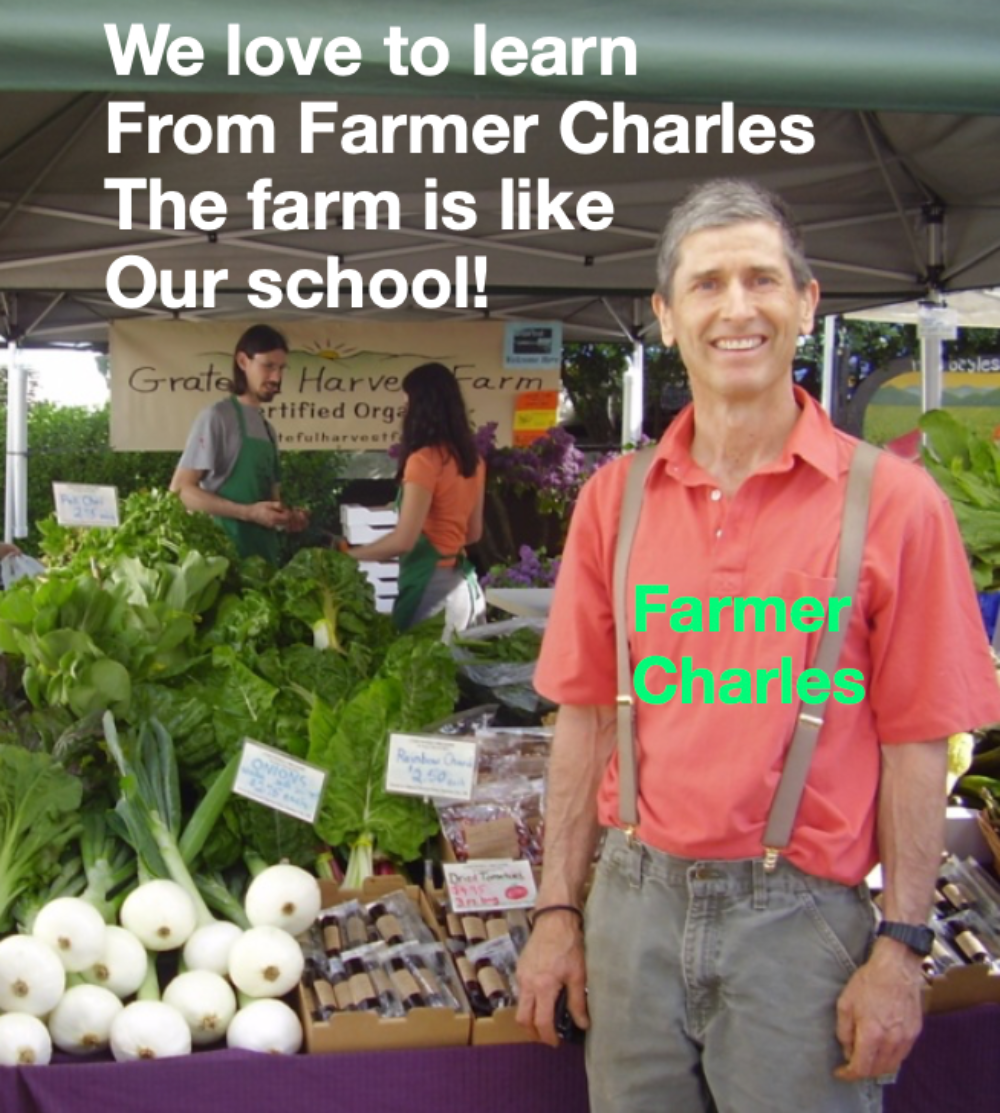
I had to include this pic of Farmer Charles. He represents the whole faculty of women and men who teach kids while they do their very best, against incredible odds, to steward soil, entrepreneurship and place. As our Farm To School work progressed in Lane County, an elegant new local farming and food processing reality developed alongside. A local farm family built a flour mill, grinding ancient and new varieties of grains into nutritious flours, selling them to schools for baking. They also began processing the lentils, dry beans and chick peas they planted as rotational crops to build soil fertility on their land. These went as high protein soup mixes and sauces to the school kitchens and food banks. Local bakeries used the local flour to bake and market pizza dough, rolls and breads to the schools. Contracts were made between the school districts and local growers for dairy products, vegetables and meats.
Our modern farm-to-school connections are forged over against the mega-food world of transnational marketing and processing conglomerates. They control our food products from the patents on the genes of engineered food crops to the tables we often don’t even use anymore to break our daily food. They promise to keep Walmarting the food economy to deliver seamlessly to superstores and institutional feeding troughs around the world while keeping their blue and yellow uniformed crew on welfare. We also create these innovative approaches to eating against a darker social past. At the same time our curricula and songs celebrate our kids’ re-connection to land and labor we need to acknowledge the painful truth of how some school-sited farms and gardens in our past were used as instruments of colonial assimilation, violence and genocide.
If you go to the National Farm To School site, you can read very well-written and documented articles, chronicling how Native American children were kidnapped to Indian Boarding Schools. They were forced to labor on the farms and in the gardens as a calculated curriculum to (as our educators said in the language of the time) “Kill the Indian, Save the Man.” See above, the classic depiction in photos from the Carlisle Indian School that opened in Carlisle PA in 1880. See below these photos from the Oregon Historical Society Research Library showing students at Chemawa Indian school, Salem, Oregon in the same era and the indigenous captives the white teachers and administrators called their “Kitchen Girls” and “Farmer Boys.”
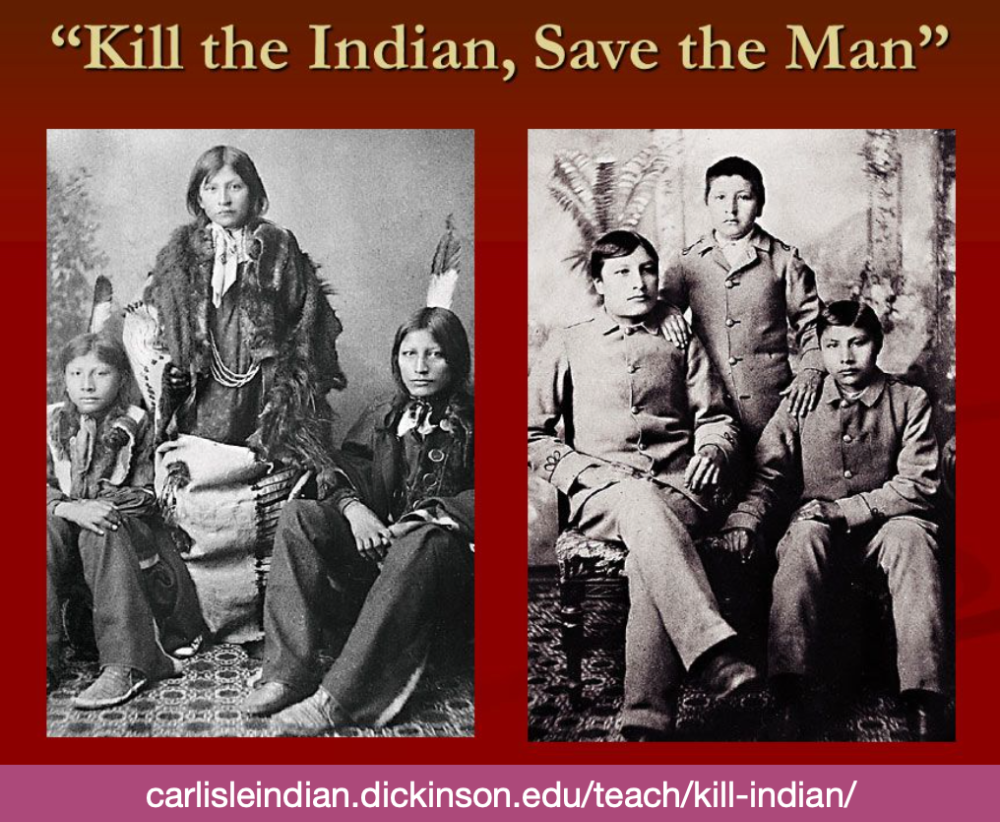
As we continue to discover unmarked graves of perhaps thousands of indigenous children buried on the sites of these Boarding Schools, we must acknowledge how farm-to-school strategies can be used in violence. How might our newest farm-to-cafeteria movements play a roll in truth, reconciliation and a process of reparations? Someday might these lead to full inclusion of not only our indigenous sisters and brothers, but generations of African Americans and other children of color, who were and are victims of the worst kind of institutional racism—racism and hate, planted and propagated on the farms and in the schools of our land? Take time to access the National Farm To School website and study this more deeply. Don’t just take it at face value from an old white guy.
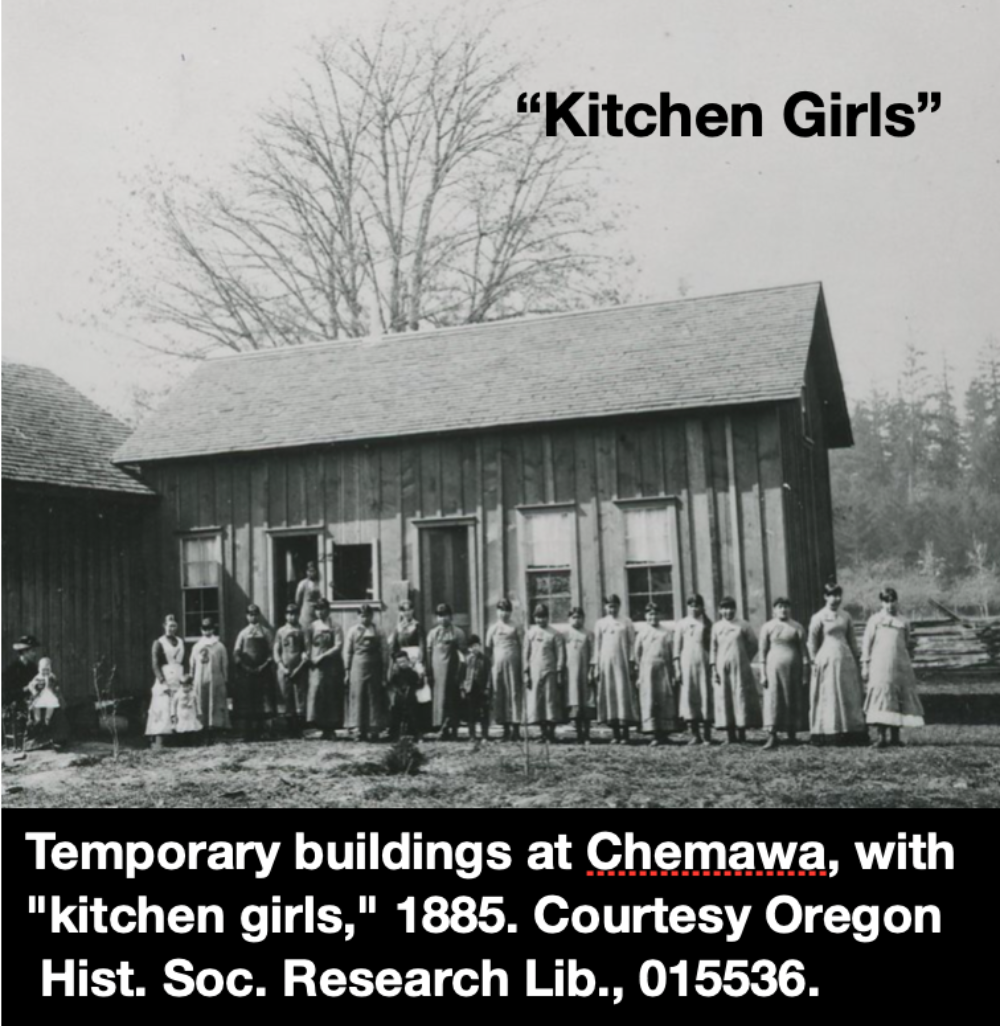
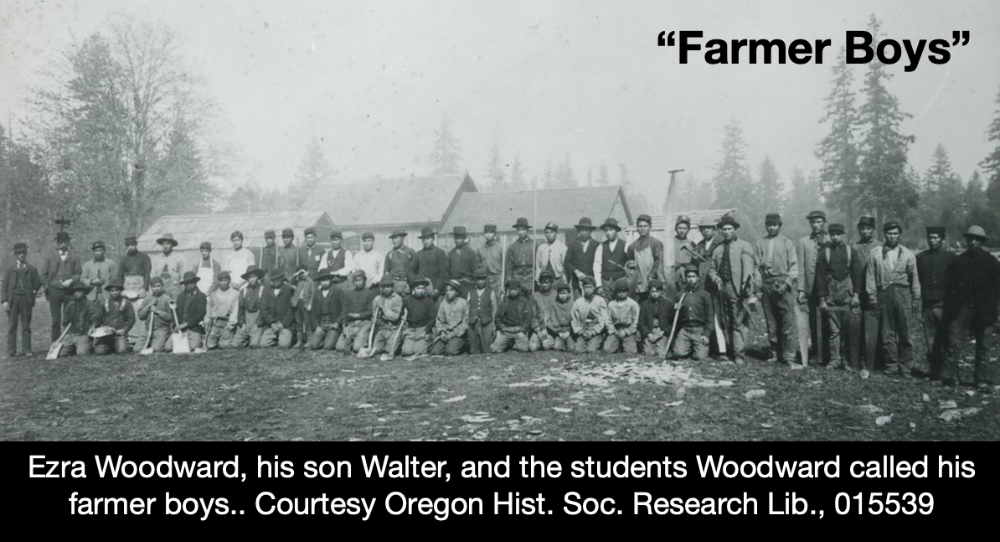
I don’t have a verse of “Oh Yum!” to celebrate each and every occurrence of goodness and magic that comes of connecting kids to the productive essence of the earth in each and every place. There are no lyrics in this song to adequately acknowledge the dark side of exploitation in field and school room. I simply want us to remember and teach what these words say:
The milk we drink comes straight from cows
And carrots come with dirt.
Little pink piggies come from sows
And eating healthy couldn’t hurt!
Maybe “eating justly couldn’t hurt!” would be a good change. Write some better verses yourselves. You have my permission. I believe 4th, 5th and 6th graders are capable of understanding how healthy agriculture based on community relations isn’t only much more fun, but also best for soil and climate. We’re at a time in human history when we dearly need millions more of us to understand the importance of living systems that draw down emissions from the atmosphere, sequestering carbon for a cooler future. If we want our newest generations to better grasp the connections between humus in the soil and a healthy atmosphere, we must get them onto farms where regenerative agriculture is the practice! These farms are the textbooks from which the science of organic matter and carbon sequestration are being comprehended anew. The relationships with farmers are the curricula that might convince our youngest humans to enter into those sacred contracts with local farms and food businesses—to buy produce from them and not the others, all as a matter of conscience. If comprehension and conscience sprout and grow like carrots and cauliflower in our Farm-to-School connections, maybe we have a chance as a people to learn a moral agriculture and make it not only our private enterprise but our public policy. It must soon become our policy or we’re done. This is the only way we can love the land as if it were part of us. Because it is.

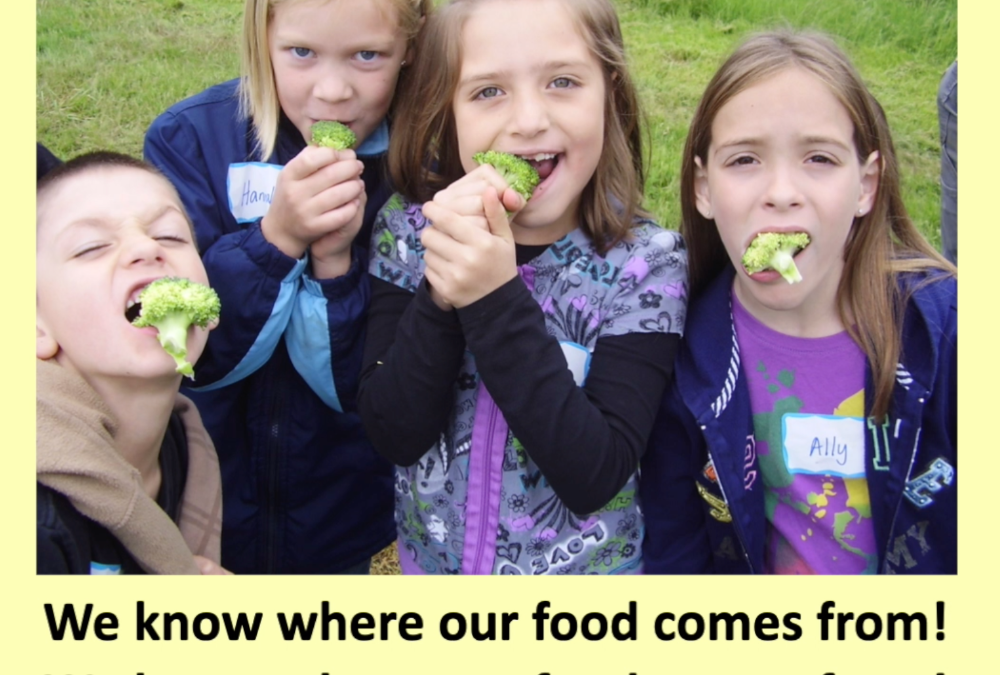
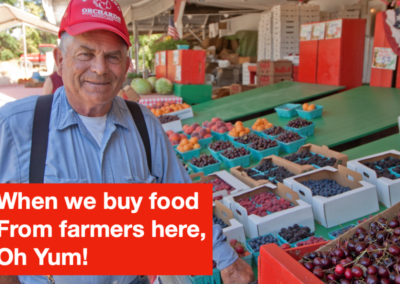
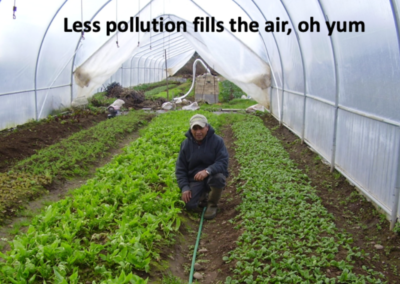
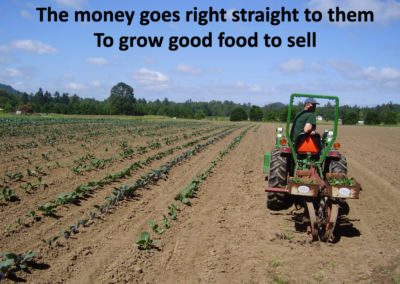

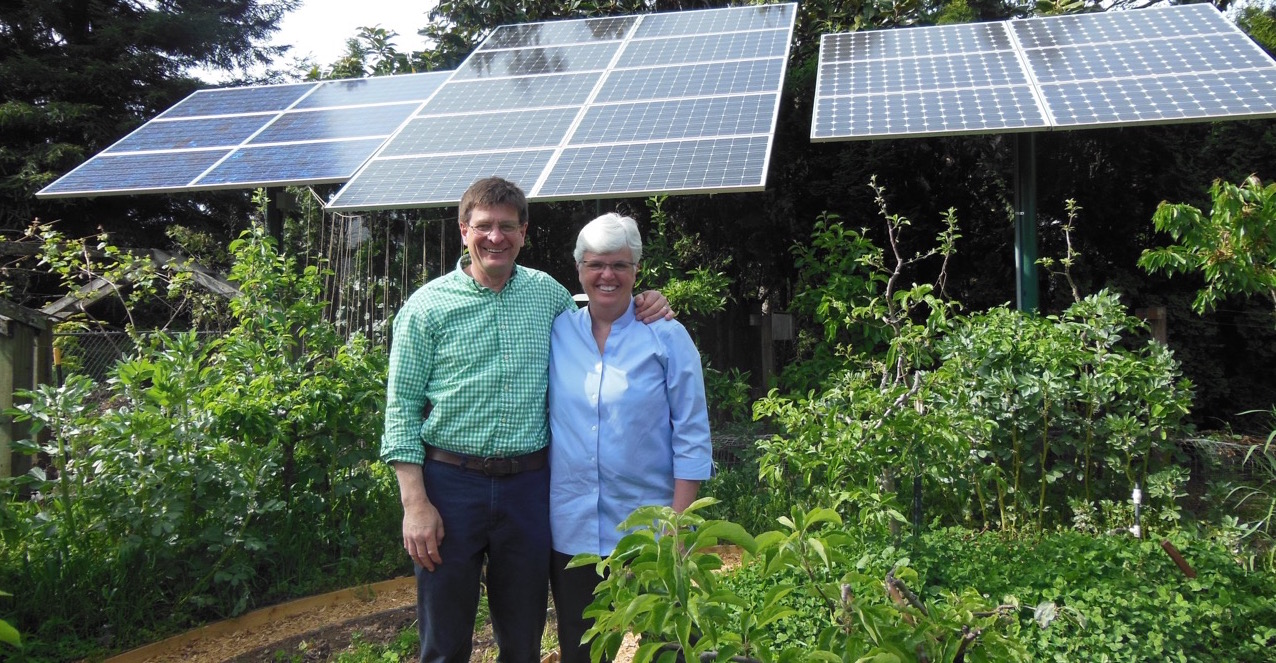


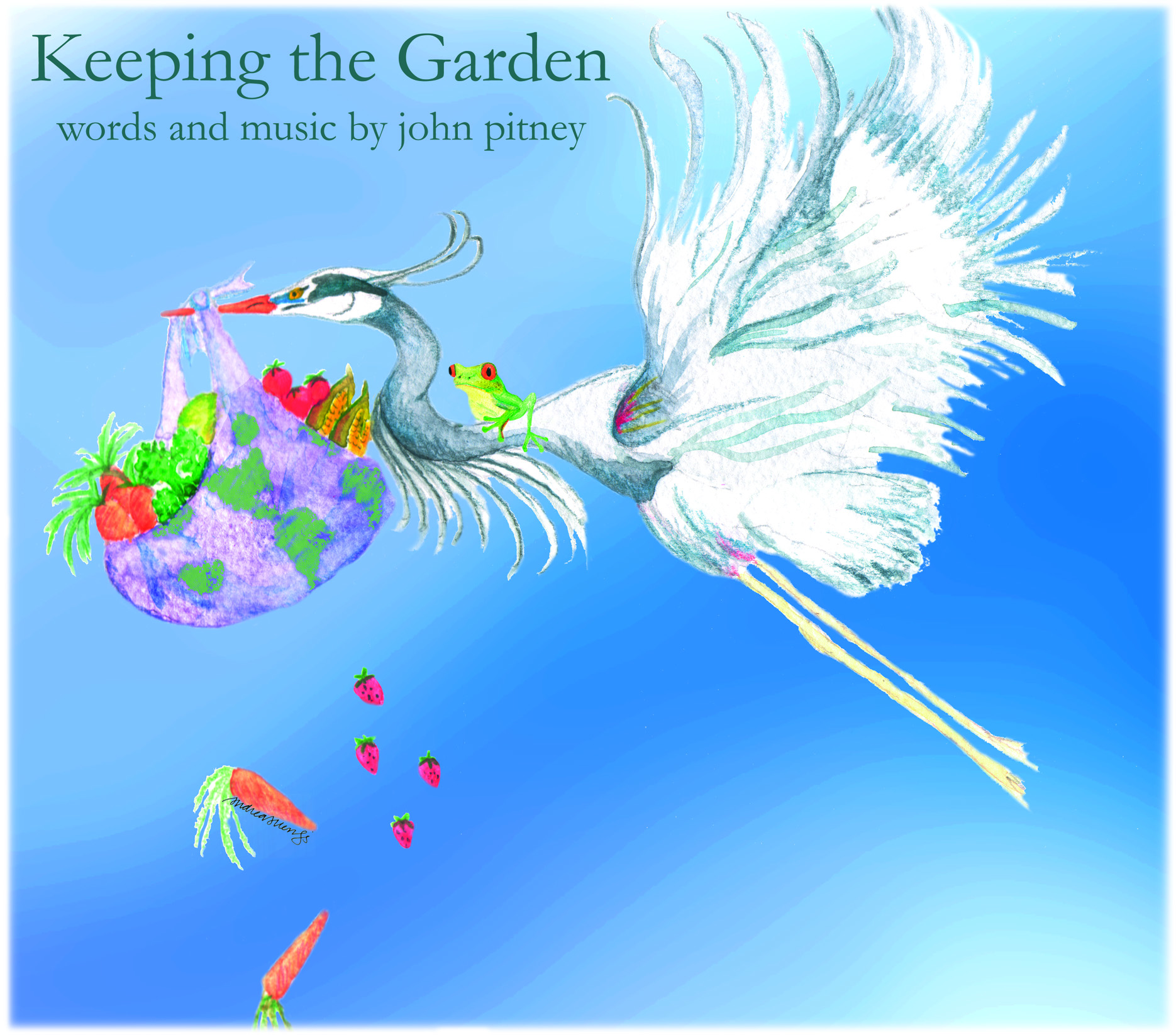



Very appropriate and timely, John. Wish there was more of a connection between the farms and schools around here. We do have lots of good farmers markets all around, but that’s about it. On a more personal note, we’re having to relearn a lot in a new climate. We’ll be moving our raised beds for next year and composting a bit more intelligently.
My best to the family!
Donna
Interesting .. .our Thursday Theology class was talking today about the lack of connection about where our food comes from. As always, good job John
John this is great. I shared a friend in the Bay area who is into educating school children in a food growing program. Her Name is Marian Woodard. I know her from her parents who were Mac residents at the times of their passing. Keep up the great work. How’s your Bend housing coming along. We are finally building in Deer Park.